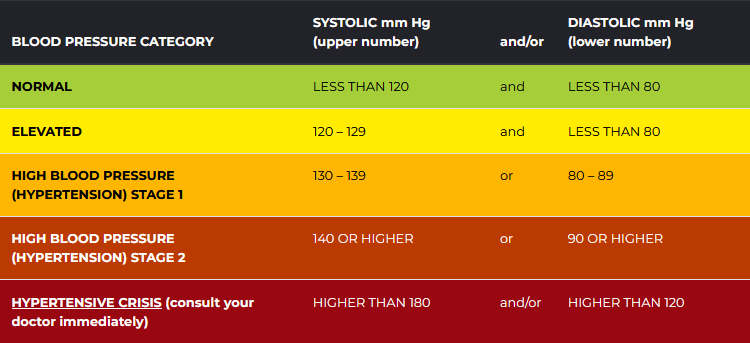Hypertension is often without any noticeable symptoms. Considered the silent killer, many people do not even know they have it. Before it’s ever detected, hypertension can progress to an advanced level. Only then are symptoms present.
Hypertension is when the force of your blood pushing against the walls of your blood vessels is consistently too high. Blood is transported from your heart to other areas of the body by arteries, and this consistently high blood pressure can damage your arteries.
This common condition doesn’t play favorites, with an estimated 1.13 billion people affected worldwide; it’s predicted that the prevalence of hypertension will rise to an estimated 29% of the world’s population by 2025.
Types of Hypertension
There are two main types of high blood pressure:
Primary Hypertension
This type has no specific cause and tends to appear gradually over time.
Secondary Hypertension
This type results from an underlying medical condition (e.g., renal disease, thyroid disease) and tends to appear suddenly.
Physicians treat hypertension by addressing the underlying condition triggering the increased blood pressure, pharmacological drugs, lifestyle modifications, and regular blood pressure monitoring.
Symptoms of Hypertension
Hypertension is often without symptoms until an advanced stage. This is why blood pressure monitoring during doctor’s visits is crucial because it may be the only early visible sign.
Signs and Symptoms:
Headache
Fatigue
Confusion
Vision problems
Shortness of breath
Know Your Numbers
The updated guidelines for the detection, prevention, management, and treatment of high blood pressure were published in 2017 by the American Heart Association (AHA) and the American College of Cardiology (ACC). The AHA and ACC defined high blood pressure as 130 mm Hg and above for systolic blood pressure measurements or 80 and above for diastolic blood pressure measurements.

Your doctor will likely take multiple blood pressure readings at three or more separate appointments before diagnosing you with high blood pressure. Blood pressure usually varies during the day and can rise during a doctor’s visit (white coat hypertension) or by taking the stairs on the way to your appointment.
Routine At-Home Monitoring
To provide more details and confirm whether you have high blood pressure, your doctor may ask you to record your readings at home. Home monitoring is a useful way to verify blood pressure readings, worsening hypertension, or treatment efficacy. Devices are affordable and easily accessible.
Self-monitoring is an excellent tool for managing your blood pressure and observing fluctuations, but it is not a substitute for doctor visits.
Check the accuracy of your device by taking it with you to your appointment. Ask your healthcare provider to watch you use your device to ensure you’re using it correctly and compare your readings with those you get at the doctor’s office.
Before Taking Your Blood Pressure
Do not exercise, eat, or smoke for at least 30 minutes.
Keep a notebook, spreadsheet, or a blood pressure log nearby to record your readings.
Rest for a few minutes by sitting in a relaxed position in a quiet room.
Using An At-Home Automatic Blood Pressure Monitor
Sit at a table or desk with both feet on the floor. Bend your arm slightly with your palm facing up.
Wrap the blood pressure cuff around your bare upper arm. The cuff’s bottom edge should be about one 1″ above the bend in your elbow. Avoid talking while taking your reading.
Press the on button; the cuff will inflate and gradually deflate as your measurement is taken. Your blood pressure and pulse will be visible on the screen; don’t forget to record your numbers.
Learn how and when to correctly monitor your blood pressure at home with this useful video from the American Heart Association.
Controlling Blood Pressure
A significant risk factor for heart disease and stroke, both of which are leading causes of death in the US, is high blood pressure. Nearly half of the adults in the United States have high blood pressure, and half don’t have it under control.
It is essential to control blood pressure. Find a doctor that is right for you to help manage your hypertension that provides:
Comprehensive treatment
Lifestyle modification education
Medication adjustment to the correct dosage
Self-monitoring education
Diagnosis of underlying conditions that can cause hypertension